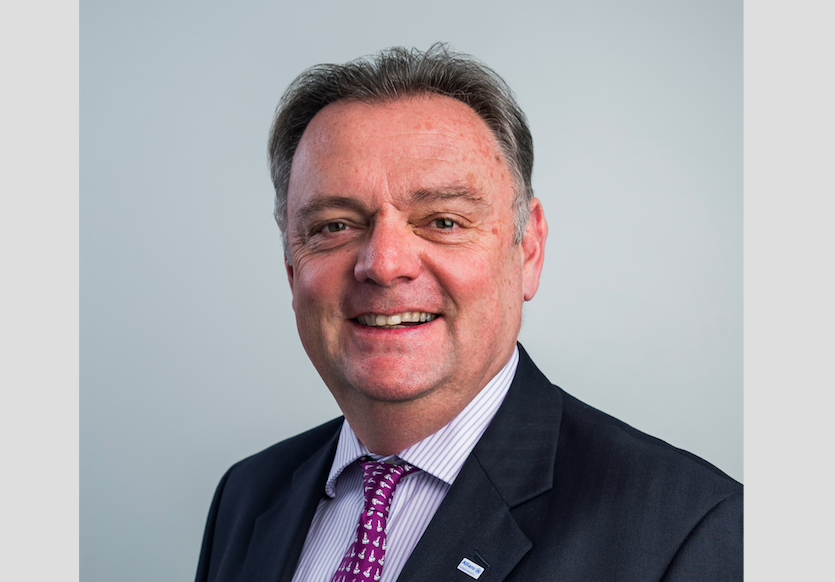Cómo el COVID-19 podría moldear el paisaje ASG en los próximos años (Parte I)
| Por IreneValiente | 0 Comentarios

La pandemia del coronavirus ha golpeado la economía mundial en un momento crítico desde la perspectiva de la ASG. Las conversaciones sobre el clima en Madrid a finales del 2019 terminaron en decepción y todas las miradas estaban puestas en la cumbre climática de la COP26 en el Reino Unido este noviembre para volver a poner en marcha las ambiciones climáticas de París. Ahora, se ha retrasado hasta 2021.
El brote de COVID-19 también se ha producido en un momento en el que los mercados energéticos mundiales ya estaban en crisis. El colapso del precio del petróleo desencadenado por una pelea por la cuota de mercado entre Arabia Saudita y Rusia en febrero se ha visto ahora agravado por una caída más pronunciada de la demanda1. Esto tiene consecuencias para la energía limpia, los biocombustibles y las tecnologías de reciclaje de plásticos.
Este año también debería ser testigo de la puesta en marcha del Plan de Acción de la UE y del Pacto Verde Europeo. Con los gobiernos naturalmente enfocados en apoyar los sistemas de salud y preservar la vida humana, los responsables políticos deben cumplir su decisión de mantener y acelerar los esfuerzos para abordar la crisis climática y las cuestiones más amplias de ASG.
 Hemos sido testigos de un repunte extremo en la volatilidad, con la del mercado de renta variable volviendo a los niveles que se vieron por última vez en la crisis financiera mundial2. Los pronósticos de crecimiento global sugieren que veremos la mayor contracción trimestral de la actividad económica desde la década de 1940 y las emisiones globales de CO2 de este año podrían caer hasta un 5%.3
Hemos sido testigos de un repunte extremo en la volatilidad, con la del mercado de renta variable volviendo a los niveles que se vieron por última vez en la crisis financiera mundial2. Los pronósticos de crecimiento global sugieren que veremos la mayor contracción trimestral de la actividad económica desde la década de 1940 y las emisiones globales de CO2 de este año podrían caer hasta un 5%.3
Si bien los bancos centrales y los gobiernos han respondido rápidamente a esta crisis en términos de recortes de los tipos de interés, nuevos programas de flexibilización cuantitativa y paquetes de estímulo fiscal; a nosotros, como a muchos, nos preocupa que cuando llegue la recuperación económica el crecimiento de las emisiones de CO2 se dispare como lo hizo en 2010.
Por si esto no fuera suficiente, tenemos otro problema social del que preocuparnos aún más. Los mayores ganadores financieros desde la crisis de hace 10 años han sido los superricos, ayudados por la rápida inflación de los precios de los activos, como en el sector inmobiliario y la renta variable4. No podemos permitirnos que ese sea el resultado de esta crisis. Esperamos que abordar la desigualdad se convierta en una prioridad aún mayor para los gobiernos. En nuestra opinión, las empresas deben desempeñar su papel y no dejar que los contribuyentes paguen esta factura una vez más.
Las implicaciones macroeconómicas
Creemos que la crisis del coronavirus tendrá efectos profundos y duraderos en el mercado de ASG, que se encuentra en rápido desarrollo. En nuestra opinión, la pandemia está ilustrando la materialidad financiera de la ASG. También hemos visto que, en los primeros días de esta crisis, los índices ASG del MSCI superaron al resto.5
 En el actual período de extrema volatilidad del mercado, el análisis del MSCI muestra que la mayor parte de este rendimiento superior se ha reflejado en los índices ASG que infraponderan el sector de la energía y tienen asignaciones sobredimensionadas a la atención sanitaria y la tecnología, que están en la primera línea de la lucha contra la pandemia.5
En el actual período de extrema volatilidad del mercado, el análisis del MSCI muestra que la mayor parte de este rendimiento superior se ha reflejado en los índices ASG que infraponderan el sector de la energía y tienen asignaciones sobredimensionadas a la atención sanitaria y la tecnología, que están en la primera línea de la lucha contra la pandemia.5
También vemos algunas tendencias interesantes cuando miramos los flujos de fondos. A medida que el virus se propagó de Asia a Europa y luego a Estados Unidos, los flujos han salido de Europa y Estados Unidos y, ahora, a medida que la confianza está regresando poco a poco a los mercados asiáticos, los flujos de fondos están volviendo a China y Japón6. Esto concuerda con el rendimiento relativo de los mercados de renta variable: hemos visto que el mercado de valores chino ha superado a otros en marzo. 7
Sin embargo, incluso con estas nuevas entradas, las participaciones actuales en China son más de una desviación estándar inferior al promedio de los últimos cinco años, lo que implica que hay un margen significativo para nuevas entradas.8 También nos alienta la recuperación de la confianza en las compañías manufactureras chinas en marzo9: representa el mejor nivel desde septiembre de 2017 y encierra algún indicio de esperanza de que esta recuperación del sector empresarial pueda repetirse en Europa a mediados de año.
Tribuna de Michael Lewis, responsable de investigación temática ASG en DWS, y Murray Birt, estratega sénior ASG de la gestora
1. Bloomberg Finance LP (April 1, 2020)
2. CBOE (April 1, 2020)
3. Bloomberg (March 27, 2020). Economists see US facing worst ever quarterly contraction
4. UN Department of Economic and Special Affairs (DESA) (January 2018). World Inequality Report 2018
5. MSCI Inc (March 2020).
6. EPFR Global, HSBC calculations (March 2020)
7. Bloomberg Finance LP (Data as of March 27, 2020)
8. EPFR Global, HSBC calculations (March 2020)
9. National Bureau of Statistics China (March 2020)
DWS and FundsSociety are not affiliated.
Forecasts are not a reliable indicator of future returns. Forecasts are based on assumptions, estimates, views and hypothetical models or analyses, which might prove inaccurate or incorrect.
Please note certain information in this presentation constitutes forward-looking statements. Due to various risks, uncertainties and assumptions made in our analysis, actual events or results or the actual performance of the markets covered by this presentation report may differ materially from those described. The information herein reflect our current views only, are subject to change, and are not intended to be promissory or relied upon by the reader. There can be no certainty that events will turn out as we have opined herein.
This information is subject to change at any time, based upon economic, market and other considerations and should not be construed as a recommendation. Past performance is not indicative of future returns. Forecasts are based on assumptions, estimates, opinions and hypothetical models that may prove to be incorrect. DWS does not intend to promote a particular outcome to the U.S. election due to take place in November 2020. Readers should, of course, vote in the election as they personally see fit.
For institutional investors only. Further distribution of this material is strictly prohibited.
For institutional investor use and registered representative use only. Not for public viewing or distribution.
Important risk information
Stocks may decline in value. Investing in foreign securities presents certain risks, such as currency fluctuations, political and economic changes, and market risks. Emerging markets tend to be more volatile and less liquid than the markets of more mature economies, and generally have less diverse and less mature economic structures and less stable political systems than those of developed countries. Investing in derivatives entails special risks relating to liquidity, leverage and credit that may reduce returns and/or increase volatility. Bond investments are subject to interest-rate, credit, liquidity and market risks to varying degrees. When interest rates rise, bond prices generally fall. Credit risk refers to the ability of an issuer to make timely payments of principal and interest. The fund invests in commodity-linked derivatives which may subject the fund to special risks. Market price movements or regulatory and economic changes will have a significant impact on the fund’s performance. There are special risks associated with an investment in real estate, including REITS. These risks include credit risk, interest rate fluctuations and the impact of varied economic conditions. Companies in the infrastructure, transportation, energy and utility industries may be affected by a variety of factors, including, but not limited to, high interest costs, energy prices, high degrees of leverage, environmental and other government regulations, the level of government spending on infrastructure projects, intense competition and other factors. Any fund that focuses in a particular segment of the market or region of the world will generally be more volatile than a fund that invests more broadly. See the prospectus for details.
The brand DWS represents DWS Group GmbH & Co. KGaA and any of its subsidiaries such as DWS Distributors, Inc. which offers investment products or Deutsche Investment Management Americas Inc. and RREEF America L.L.C. which offer advisory services.
Certain DWS investment products and services may not be available in every region or country for legal or other reasons, and information about these products or services is not directed to those investors residing or located in any such region or country.
The material was prepared without regard to the specific objectives, financial situation or needs of any particular person who may receive it. It is intended for informational purposes only and it is not intended that it be relied on to make any investment decision. It is for professional investors only. It does not constitute investment advice or a recommendation or an offer or solicitation and is not the basis for any contract to purchase or sell any security or other instrument, or for DWS and its affiliates to enter into or arrange any type of transaction as a consequence of any information contained herein.
Investments are subject to various risks, including market fluctuations, regulatory change, possible delays in repayment and loss of income and principal invested. The value of investments can fall as well as rise and may not recover the amount originally invested at any point in time. Furthermore, substantial fluctuations of the value of the investment are possible even over short periods of time.
DWS and its affiliates do not provide accounting, tax or legal advice and investors should consult their own advisors with respect to their particular circumstances.
For investors in Peru / Argentina / Chile: Without limitation, this document does not constitute an offer, an invitation to offer or a recommendation to enter into any transaction neither does it constitute the offer of securities or funds. The offer of any services and/or securities or funds will be subject to appropriate local legislation and regulation.
Additional disclaimer for Chile: This private offer commences on current date and it avails itself of the General Regulation No. 336 of the Superintendence of Securities and Insurances, currently the Financial Markets Commission. This offer relates to securities not registered with the Securities Registry or the Registry of Foreign Securities of the Commission for the Financial Markets Commission, and therefore such shares are not subject to oversight by the latter. Being unregistered securities, there is no obligation on the issuer to provide public information in Chile regarding such securities; and these securities may not be subject to a public offer until they are registered in the corresponding Securities Registry.
La presente oferta privada toma vigencia el date y está sujeta al Reglamento General No. 336 de la Superintendencia de Valores y Seguros (SVS), conocida como la Comisión de Mercados Financieros (CMF). Esta oferta cubre aquellos instrumentos que no están registrados en el Registro de Valores o Registro de Valores Extranjeros de la Comisión de Mercados Financieros (CMF), por lo tanto, dichas acciones no están sujetas bajo la supervisión de la CMF. Debido a que no están registrados, el emisor no tiene la obligación de proporcionar información sobre dichos instrumentos en Chile, los mismos no pueden ser ofrecidos bajo una oferta pública hasta que estén registrados en el Registro de Valores que corresponde.
Additional disclaimer for Peru: The Products have not been registered before the Superintendencia del Mercado de Valores (SMV) and are being placed by means of a private offer. SMV has not reviewed the information provided to the investor. This Prospectus is only for the exclusive use of institutional investors in Peru and is not for public distribution
For investors in Argentina: Without limitation, this document does not constitute an offer, an invitation to offer or a recommendation to enter into any transaction neither does it constitute the offer of securities or funds. The offer of any services and/or securities or funds will be subject to appropriate local legislation and regulation.
For investors in Mexico: The funds have not been and will not be registered with the National Registry of Securities, maintained by the Mexican National Banking Commission and, as a result, may not be offered or sold publicly in Mexico. The fund and any underwriter or purchaser may offer and sell the funds in Mexico, to institutional and Accredited Investors, on a private placement basis, pursuant to Article 8 of the Mexican Securities Market Law.
Without limitation, this document does not constitute an offer, an invitation to offer or a recommendation to enter into any transaction neither does it constitute the offer of securities or funds. The offer of any services and/or securities or funds will be subject to appropriate local legislation and regulation.
For investors in Brazil: The shares in the Fund may not be offered or sold to the public in Brazil. Accordingly, the shares in the Fund have not been nor will be registered with the Brazilian Securities Commission – CVM nor have they been submitted to the foregoing agency for approval. Documents relating to the [shares in the Fund], as well as the information contained therein, may not be supplied to the public in Brazil, as the offering of shares in the Fund is not a public offering of securities in Brazil, nor used in connection with any offer or subscription or sale of securities to the public in Brazil.
For investors in Panama: These securities have not been listed with the Superintendence of the Securities Market and neither has any offering, sale or transaction with them. The listing exemption has been made based on Article 83 (3) of Decree Law No. 1 of July 8, 1999 (Institutional Investors). Consequently the tax treatment established under Articles 269 to 271 of Law Decree 1, dated 8 July 1999, does not apply. These securities do not fall under the supervision of the Superintendence of the Securities Market.
For investors in Uruguay: The sale of the [Products] qualifies as a private placement pursuant to section 2 of Uruguayan law 18,627. The Products must not be offered or sold to the public in Uruguay, except in circumstances which do not constitute a public offering or distribution under Uruguayan laws and regulations. The [Products] are not and will not be registered with the Financial Services Superintendency of the Central Bank of Uruguay.
© 2020 DWS Group GmbH & Co. KGaA. All rights reserved. I-075121-1 U.S. 074963 (4/2020)















